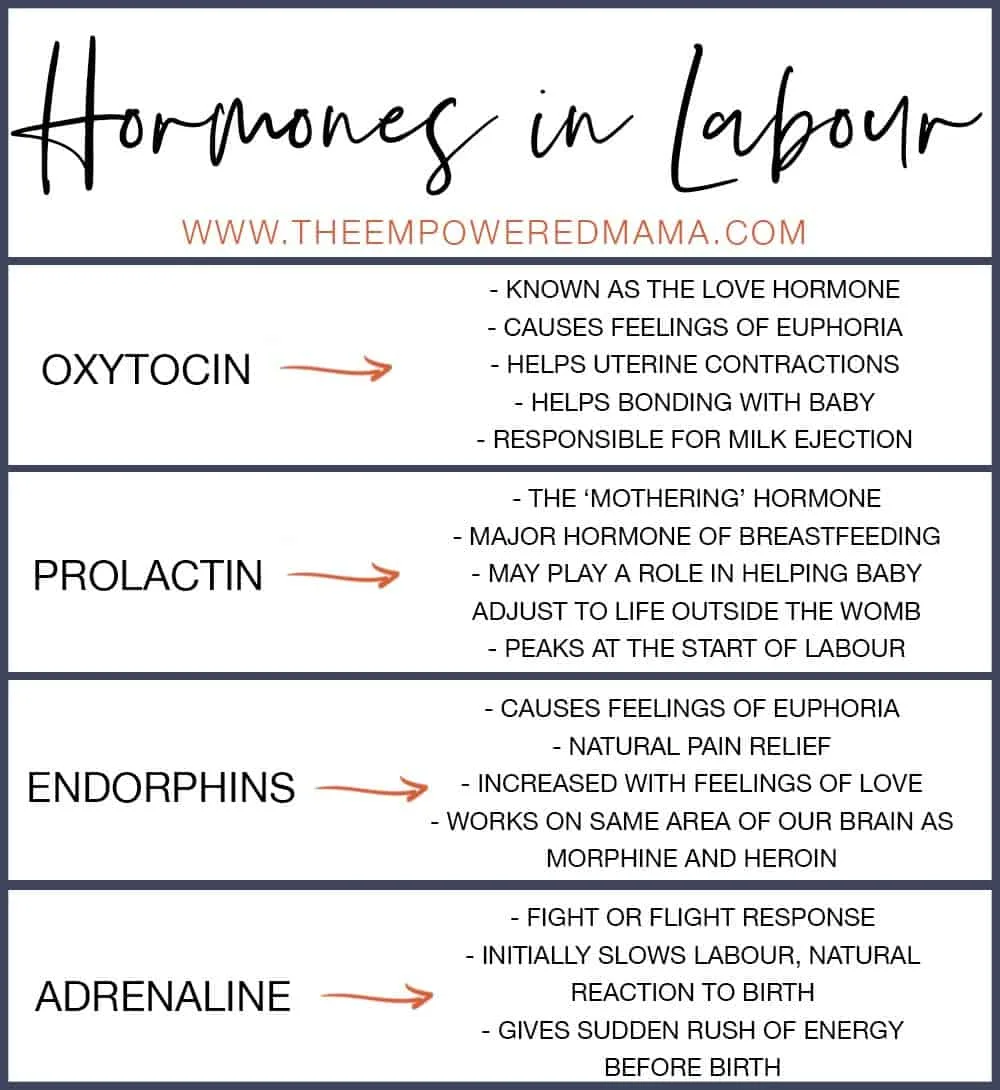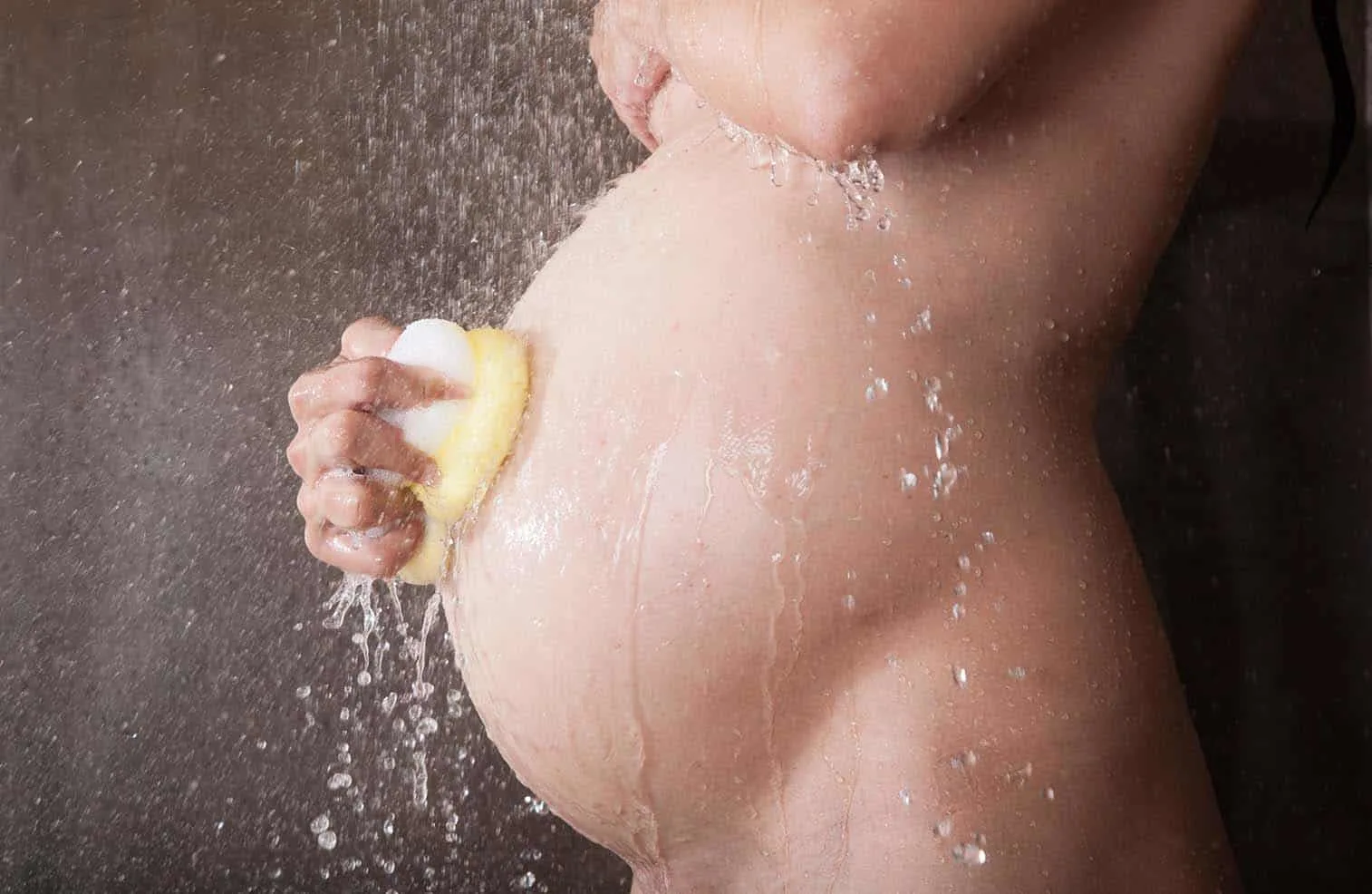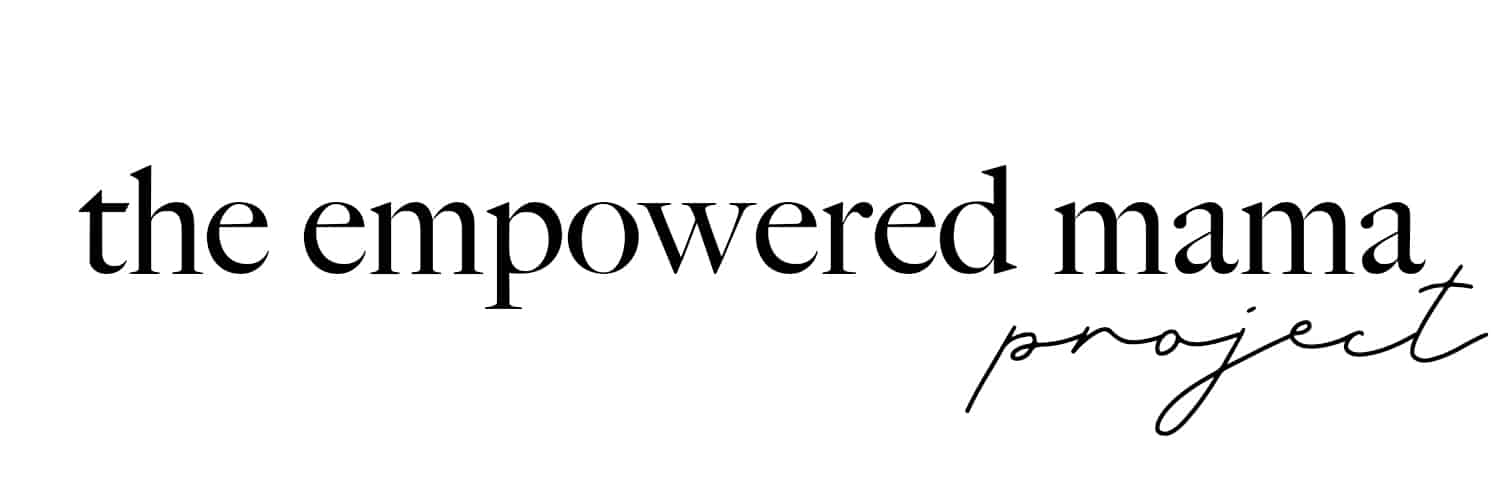Labour and birth is one of the most physically and emotionally profound experiences of your life. You owe more to yourself, and to your family’s experience of welcoming a new baby, than to just wing it.
Here are 17 natural ways to cope with labour and birth, so you can prepare and help yourself in labour to work towards a positive experience.
You can read more about The Pitfalls of ‘Going With The Flow’ in Birth here.
1 – Educate Yourself Beyond Hospital Prenatal Classes
It’s a sure bet that your prenatal class will teach you all about when to go into hospital in labour, pharmacological pain relief options (drugs), how many support people you’re allowed, what to pack in your bags and so on.
Stock standard, one size fits all education.
They see thousands of women through their doors and need to be able to get across the basic information to all.
To be better prepared, and have a more positive and in-control experience, take your understanding of birth far beyond this.
Research research research. Watch ‘positive birth videos’ on Youtube. Learn about your hormones in labour that are your natural pain relievers (see below). Learn how to boost those hormones.
Make a toolkit like the tips in this post that you and your support people can use to help you through labour and birth.
Find a ‘continuity of care’ Midwife to care for you throughout your pregnancy and birth, who will get to know you and advocate for your wishes.

2 – Massage
Massage in labour helps relieve tension, promote relaxation and endorphins, improves blood flow and reduces labour sensations.
Massage can be light and gentle with the fingertips running along the back and arms, or firm and slow, focusing on sore areas such as the lower back and sacrum.
Practice with your support person in pregnancy to find out what feels nice for you, and find a nice carrier oil that you can mix your favourite essential oils with.
3 – Hypnobirthing
I could write an entire post about the benefits of Attending a Hypnobirthing class for both Mums and Dads. This one I highly recommend as a Midwife and as a Mama.
You’ll learn how to find deep relaxation in labour, boost your natural pain relieving endorphins, shorten your labour, make it an easier experience, eliminate fears, learn what is actually happening in your body during labour, and reduce the need for pharmacological pain relief.
Hypnobirthing is NOT about having a silent labour, a drug-free labour, an all natural labour or home/water birth, though it does significantly support you in achieving these if that is what you want. It’s also not about being hypnotised in labour.
You can find a Hypnobirthing Practitioner through Hypnobirthing Australia.

4 – Choose Your Support Team Wisely
Support people in labour can make a huge difference to your experience, either in a positive or negative way. You may be happy for it to be just your partner. Or you may not have a partner.
If you are choosing someone to support you, make sure they are not just in it for the cute baby.
They need to be open to learning with you, respect your choices, know when to give you space and when to hold your hand, recognise your needs (maybe you just need a cool drink), are a good listener and not just someone who wants to tell you all about their births, and can support you beyond saying ‘just have the epidural’.
5 – Aromatherapy
Now I’m no aromatherapist, so I can’t tell you what pure essential oils to use and how. But what I do know is this. I’ve seen aromatherapy benefit labouring mothers for years.
The level of relaxation that comes to them when they smell their oils of choice is visible.
It also immediately relaxes any health care provider as soon as they walk into the beautifully scented room – leaving their stress of the day at the door and out of your sacred birthing environment.
I encourage my clients to use aromatherapy as a ritual in the final weeks of pregnancy. Perhaps a few drops in a warm bath each night.
By doing so you can train your brain to associate the smell with relaxation, so when it comes time to have your baby, using the oil on a cool face-washer or in a diffuser will instantly relax you… which means boosted pain-relieving hormones!
Some faves are Clary Sage, Jasmine, and Lavender.

6 – Sterile Water Injections
Sterile water injections (SWI) are a really effective strategy to relieve back pain in labour.
Your Midwife injects four small blebs, like mosquito bites, into the tissue of your lower back. It can be repeated as many times as you need, and gives immediate relief, usually lasting up to 90 minutes.
There is no ill-effect on mum or baby as it is not a drug, it doesn’t affect your mobility, and it can positively impact the length of labour as it helps you to be more comfortable and relax.
There is an initial sting with SWI, but it only lasts 30 seconds or less. It seems strange, doesn’t it? Water being injected into skin and giving such a substantial amount of pain relief.
So without going into the science of it and boring you, you’ll just have to trust me. I’ve seen it hundreds of times, and it is amazing.
7 – TENS
This one I swear by, having used a TENS machine for a large part of my own labour. So I was working at the hospital, heavily pregnant Midwife, first time Mama.
Everyone always asked if I was going to have all the drugs or if I was was scared because I saw birth all the time? Just generally negative and unhelpful remarks.
One day I’d waddled my heavily pregnant self over to Pathology to drop something off and got chatting to a really nice Pathologist. She told me all about her births, and that I HAD to get myself a TENS machine.
She raved about how good it was for relieving pain.
Being a Midwife, I’d heard of them, and knew they were meant to work for labour pain. But in all my years in Birth Suite, I’d seen them used maybe twice. I took her advice and bought one.
The day came to birth my baby and that TENS machine did not leave my back unless I was in the shower or bath. It was amazing.
I’m convinced that if I didn’t have TENS in my ‘labour toolkit’ I probably wouldn’t have had the drug-free intervention-free birth that I had.
8 – Heat pack
Heat packs are a great way of relieving pain in labour.
Like most natural methods, heat packs work by stimulating your touch receptors so your brain processes that message (heat), rather than the message your pain receptors are trying to send it (pain).
It’s always good to have two heat packs on hand in labour. One for your lower back, and one for your lower abdomen.
9 – Shower
Warm showers in labour relieve pain by stimulating thermoreceptors, closing the gate to slower conducting pain fibres which reduces the perception of pain.
It’s also a great method of increasing endorphins through relaxation. Some women even birth in the shower, and the warmth of the water can help the tissues of the perineum stretch during birth and create more comfort for Mama (see number 17).

10 – Birth Pool
The benefits of water immersion in labour and/or birth are vast. Whether in a large bath or birth pool, deep immersion in warm water (up to your nipples, 37 degrees Celsius) can significantly reduce pain sensations in labour.
It can also reduce the need for drugs and interventions, promotes positive experience and sense of control, privacy and safety, relieves tired muscles and relaxes you through weightlessness, conserves your energy, increases endorphins, aids stretching and comfort of the perineum and shortens labour.
Using a birth pool in labour and birth is not associated with increased risk of infection, drowning (baby is oxygenated through their umbilical cord) or poor outcomes for mum and babe.
In some parts of Australia, it can be hard finding a hospital that ‘allows’ water-birth, or that has staff trained in caring for women in the bath.
I have two thoughts around this – firstly, we are not allowed to ‘allow’ anyone to do anything in health care – human rights and all.
And secondly, why are we are more afraid of a woman having a bath than an epidural? A procedure that comes with a lengthy list of risks to mum and babe.
11 – Cuddling & Kissing
Stick with me here. I know it seems like it may be the last thing you want to do in labour. But cuddling up to your partner is effortless really.
Instead of squatting and holding on to the side of a hospital bed with crispy white sheets, get your partner to sit on a chair while you hold each other, supporting your weight, and feeling the safety and security of being loved and held.
It’s all about the oxytocin. Remember how your hormones of labour work – see number 1 if you’ve forgotten. Touch elicits oxytocin, which boosts endorphins, which is a natural pain reliever.

12 – Affirmations
Positive affirmations work for anyone, in any birth environment.
Whether birthing at home, hospital, by caesarean, with pharmacological pain relief or with none, repeating positive affirmations leading up to birth, and seeing them during birth, instils confidence in your body’s ability to cope, reduces fear, and therefore reduces tension and pain, and promotes a more positive experience.
You can write your own affirmations, or you can get a copy of the ones we’ve created, written by a Midwife and beautifully designed for you.
13 – Perineal Massage
Perineal massage from 34 weeks of pregnancy can promote confidence in your body when it comes to birthing your baby.
It is known to reduce the incidence of episiotomy and may reduce the risk of significant tears (3rd & 4th degree). It is thought to increase the elasticity and blood flow of the perineum and promote more comfort during birth.
As well as the physical benefits, it can have psychological benefits in helping women to learn their body and the sensations of the perineum stretching prior to birth, if they are very fearful of this.
It is important to talk to your Midwife about how and when to perform perineal massage.
14 – Mobility
Active upright labour is a term you’re going to want to get familiar with.
You can do some research into ways you can have an active upright labour, but ultimately, it’s about listening to your body and your instinct.
Here are the benefits of mobilising and being upright in labour and birth, rather than lying on a bed, or worse, legs in stirrups.
- Reduced length of labour
- Reduced interventions and therefore reduced stress to mother and babe
- Partners can be more involved
- Reduced pain, more comfort, and increased sense of control
- More room in the pelvis for baby to come through
- Better positioning of baby for easier labour and birth
- Better oxygenation to baby
- Uses gravity to bring baby down own to cervix and encourage it to dilate
- Easier ‘pushing’ stage
- Less risk of trauma to perineum during birth
- There are no rules – adopt whatever position is comfortable for you
15 – Environment
Envisioning and planning your birthing environment is crucial to how you’ll labour, and cope with labour.
To have reduced pain, and easier birth, women need to feel safe, private, unobserved, in a warm, dimly lit, quiet space.
Think of it like this. You (probably) made love to make this baby, now it’s time to have this baby.
You need the same environment now as you do when having nooky. Would you be able to have sex in a bright, sterile, noisy room with lots of people watching? Most people would say no.
Let’s bring it back to how the environment we set up can be a natural way to cope with labour.
Melatonin is boosted in a dark, quiet, relaxing setting. It is inhibited by a feeling of being bothered and observed. Melatonin boosts oxytocin, which promotes endorphin release, which is a natural pain reliever.
Some ways you can create an environment that facilitates easier birth include having battery operated candles in a dark room, relaxing music you’ve chosen yourself, aromatherapy, keep the support people to a minimum, keep the room warm, put your affirmations up on the wall, shut the doors, close the curtains, have a phones on silent rule, and ask others to keep chat to a minimum. If you’re birthing in hospital, take your own pillow.
16 – Hip squeeze
This is a tried and tested gem. I teach all of my client’s partners the double hip squeeze technique at the later stages of pregnancy when the pelvic bones have softened and are more moveable.
Every time I do it for a Mama, I can feel and see her body melt between my hands as she relaxes and says ‘aah that feels nice’. (Note from Krystal – Caitlin did this for me during my labour and it was ah-may-zing.)
Other than feeling really good and reducing pain and tension, the double hip squeeze benefits labour by creating more room in the pelvis for baby to move down.
You can find lots of instructional videos on how to do it through YouTube.
17 – Warm Compress to the Perineum
Understandably, a lot of women fear the ‘burn’ or ‘sting’ of birthing a baby. We’ve already discussed how the warmth of shower water or the bath can help the perineum stretch safely and ease or eliminate that sensation.
But what if you’re not birthing in a bath or shower?
Having a warm compress/face-washer held to the perineum whilst you birth your baby can significantly reduce painful sensations, and also reduce the incidence of significant perineal trauma (third and fourth degree tears).
Your Midwife will need to have a bowl of very warm water to ensure the compress stays warm enough.
Ensure you discuss this with your Midwife and in your written birth preferences as it may not be a routinely utilised strategy of your care provider.
























